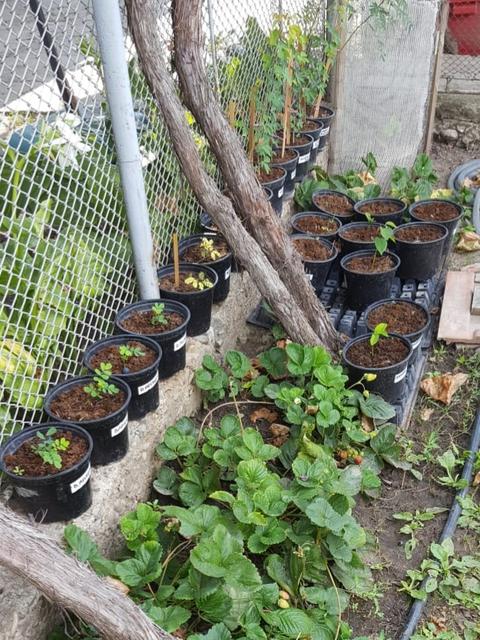All of these except 2 pots on the lower part are legume trees as it follows:
African black wood,Dalbergia Melanoxyllon- first 4 pots on the concrete ridge.Has black wood and its the real tree from wich the pharaoh of Egypt walking stick was made.Its the real ebony and persimmons were named ebony by mistake but its convenient since this black wood trees are rosewoods or palisanders.
Acacia Dealbata- the yellow looking seedlings wich arent doing great.Decorative tree.
Pithecellobium Dulce,red fleshed Guamuchil - on the concrete ridge after the yellow acacia.Has nice looking edible fruit,tropical.
Sesbania Punicea- last 2 biggest seedlings.Poisonous ornamental tree that makes beautifull red flowers at young age of 1 or 2 years.
Inga sp- all the pots on the ground except 2 of them.I have an unkniwn specie but edible ,from Costa Rica.They have more than 60 species of Inga there and its hard to tell wich specie it is.

Pterocarpus trees are also legumes that fix nitrogen.They have a red sap wich makes the tree look like its bleeding when its cut.Somme of them have a red wood wich is the most expensive wood in the world.Manny poore people die every year trying to steal Pterocarpus logs .I call it most expensive because of the number of people that get killed.
They are tropical trees but there is one quite cold hardy related specie in South America.Its called Tipuana Tipu and has same red sap and similar looking flowers but doesnt have precious wood like P Santalinus.